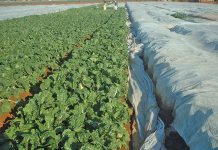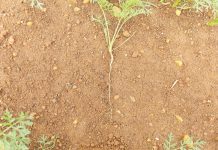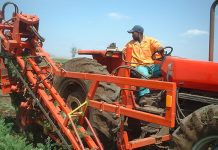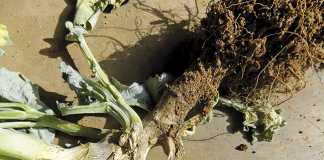The most common mistake when growing cabbages is not taking into account how nitrogen moves in the soil. Regardless of the amount of nitrogen applied during land preparation, the seedling will only be about 5cm deep in the soil, and the roots are in a very limited range. When you apply frequent irrigations after transplanting, the nitrogen tends to leach down to deeper layers.
It may only be 20cm down in the soil, but this is still out of reach for the transplants. Nitrogen at this level won’t benefit the plant at this vital stage.If the plant becomes low in nitrogen at this time, it’ll stop growing and harden off. This problem also involves soil type, organic matter content and climatic conditions at the time of planting. Those who have sufficient nitrogen in the plants and in the plug won’t experience this problem.
Providing favourable conditions
The safest procedure is to apply a light LAN dressing near the plants, after the three days required to establish the stand. The plants will perceive all conditions as favourable regarding fertility and soil moisture, and start off growth with big leaves and the intention to produce as large a plant as possible. Without big leaves, the plant can’t make a large head, even if favourable conditions are provided later. You can apply the first side dressing in various ways. For small cabbage producers, a handful of LAN can be applied close to (but not touching) 10 to 12 plants.
For larger cabbage producers, take an empty fertiliser bag, roll the opening halfway down and insert a section of plastic conduit pipe into one corner. Secure it with string. Walk the land directing the flow of LAN down each row to the required distance from the plants. One labourer can do 1ha/day.
Some farmers have bought or adapted implements to do this mechanically. You can also broadcast just before irrigation, but then you’ll need much higher applications to achieve the same stimulus. But much of the nitrogen will be in a position where the roots can’t reach it for several weeks. This means it’s at risk of leaching after heavy rains. This application is ideally applied three to five days after transplanting.
Be cautious on low-rainfall areas
Some cabbage growers believe that because they’re in low rainfall areas, they can apply all the nitrogen at one time with little or no risk of leaching. There may be some truth in this, but why take a chance with something so expensive?
Furthermore, having high amounts of nitrogen in the soil at one time isn’t good for soil organisms and their balance in the soil. It also encourages humus to break down rapidly, which may have temporary benefits, but will gradually break down the soil structure. The correct procedure is to keep the nitrogen levels adequate, but not excessive, for the highest yields, lowest cost and minimum losses.












